I recently got to try what is, probably, the most technologically fascinating earphones I’ve tried to date. It’s Bragi’s Dash earphones, a truly wireless pair of earphones born out of a KickStart project in 2014. It has just about every imaginable feature you could ask to have, all of them in a very well-designed product.
Bragi raised almost US$3.4 million on the KickStarter crowdfunding platform in 2014. They are arguably one of the first ever truly wireless earphones, along with Earin that also launched as a KickStarter project at around the same time. But Bragi wasn’t just about a pair of wireless earphones. They pitched a really impressive set of features, some of them already quite amazing on their own, but all of them together, definitely out of this world.
What is the Dash about? Well, Bragi The Dash, as Bragi prefers to call it, is many things:
- Bluetooth wireless in-ear monitors
- Bone conduction microphone
- Audio transparency mode
- Fitness/activity tracking
- Heart rate monitoring
- Music player with 4 GB internal storage
- Touch sensors for user control
- Gesture support
- Waterproof enough for swimming
Is there something else you would wish for in a pair of wireless earphones? Oh right, if you ask, perhaps I might say built-in GPS, but I dare not hope for too much. Seriously, that is one awesome feature list.
Not just the features, but the design of the Dash is also really impressive. Bragi has paid attention to the little details. It shows, because even the packaging is excellent.
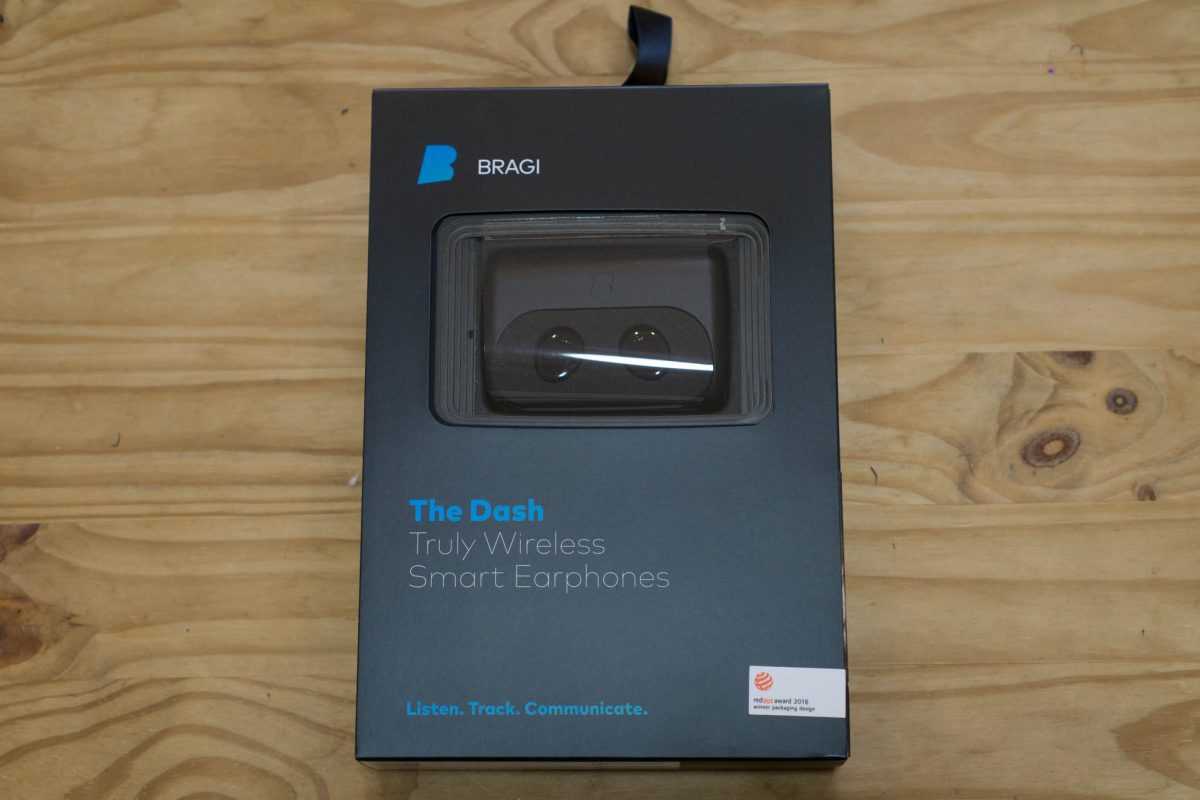
The Dash arrives in a cool box, peeking out through a window in the centre. This isn’t just a box with a window. The box is designed like one of those children’s book, with thick cardboard pages.
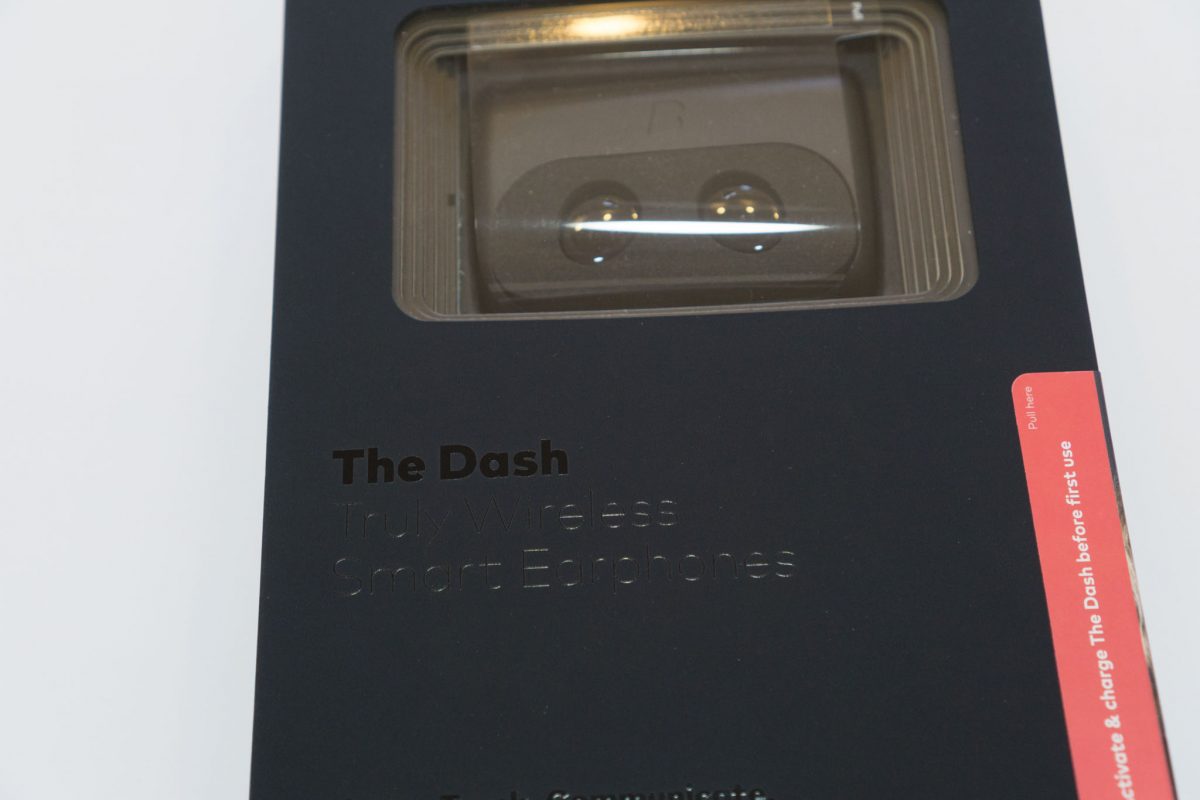
Opening the “book”, you’ll find printed on the “pages” some basic instructions to get you started and acquainted with the Dash.
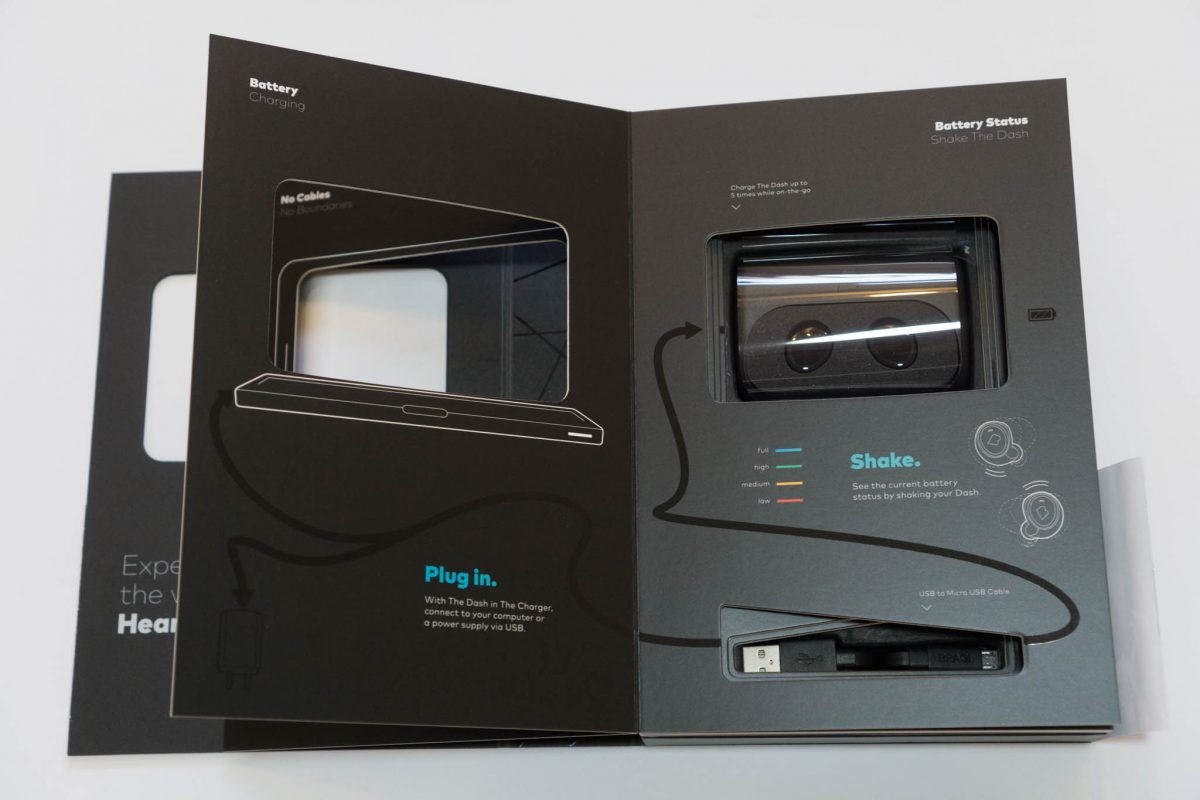
Most of the instructions are pretty common sense, but some others, perhaps, you might need to pay attention. I regretted skipping all the pages and going straight to the Dash itself, because I found myself having to backtrack to find some help to get me started!
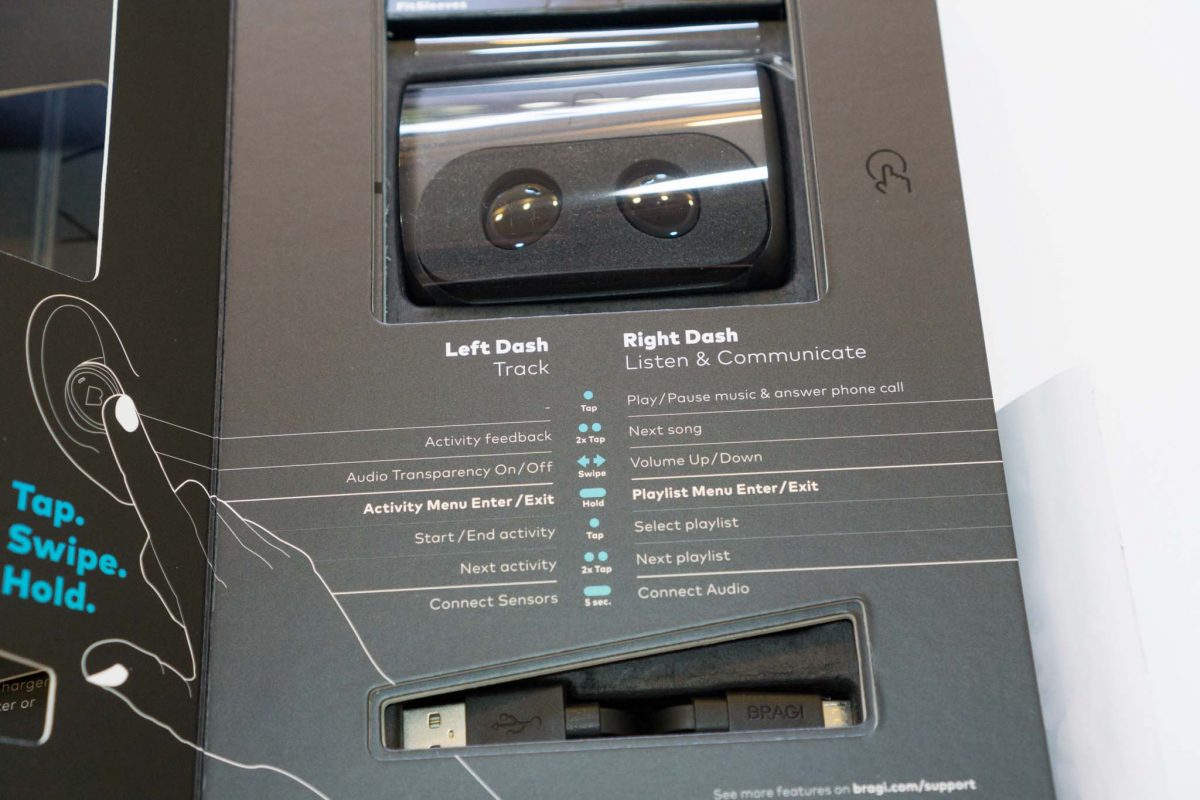
So turning each page gets you closer to the Dash, until you finally arrive at it. Neatly packed, everything clearly labeled.
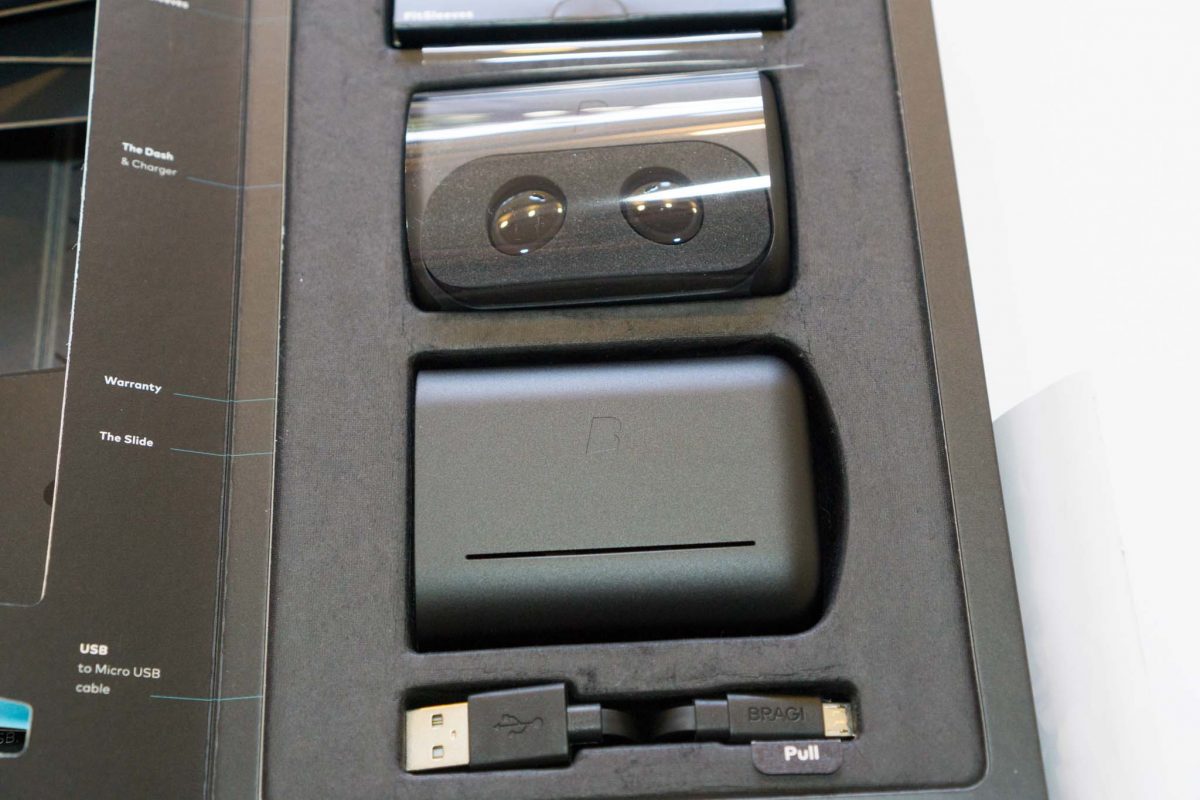
Included with each Dash is a charging case, the cover for the case (“The Slide”), a bunch of silicon sleeves (“FitSleeves”) in different sizes, and a MicroUSB cable.
The case, incidentally, isn’t just some cheap plastic to hold the Dash when you’re not using it. It’s all metal, has a very solid construction, and the Dash magnetically attaches and positions itself in the case. It’s also a charging case, of course, because it has its own battery, so the Dash gets recharged whenever you store it in the case.
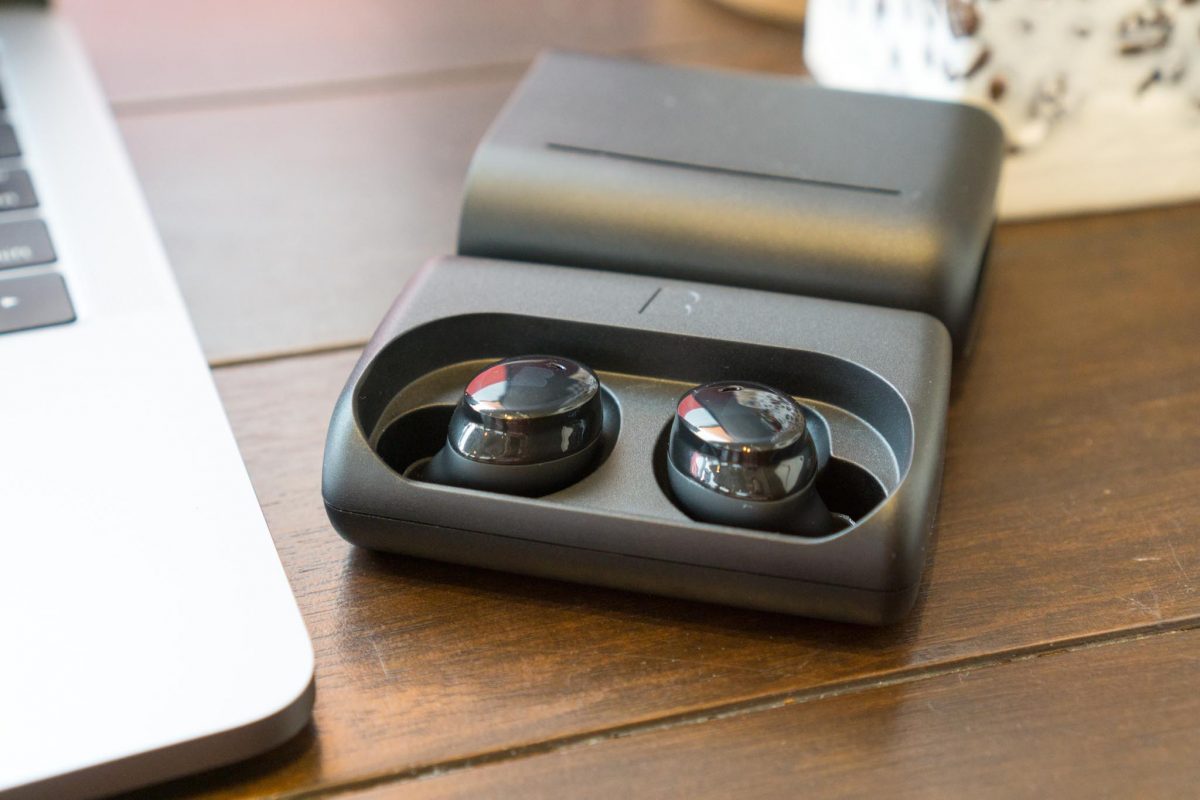
The Dash itself is no less impressive in build quality. Smooth, slick, plastic on the outside face, matched with rubbery-texture on the inside. The overall design is ergonomic and nicely contoured to blend into the ear, not stick out obtrusively like some other earphones might do.
Then, the pulsating, breathing, coloured LED status indicator on the Dash itself lends a very futuristic touch to the overall experience.
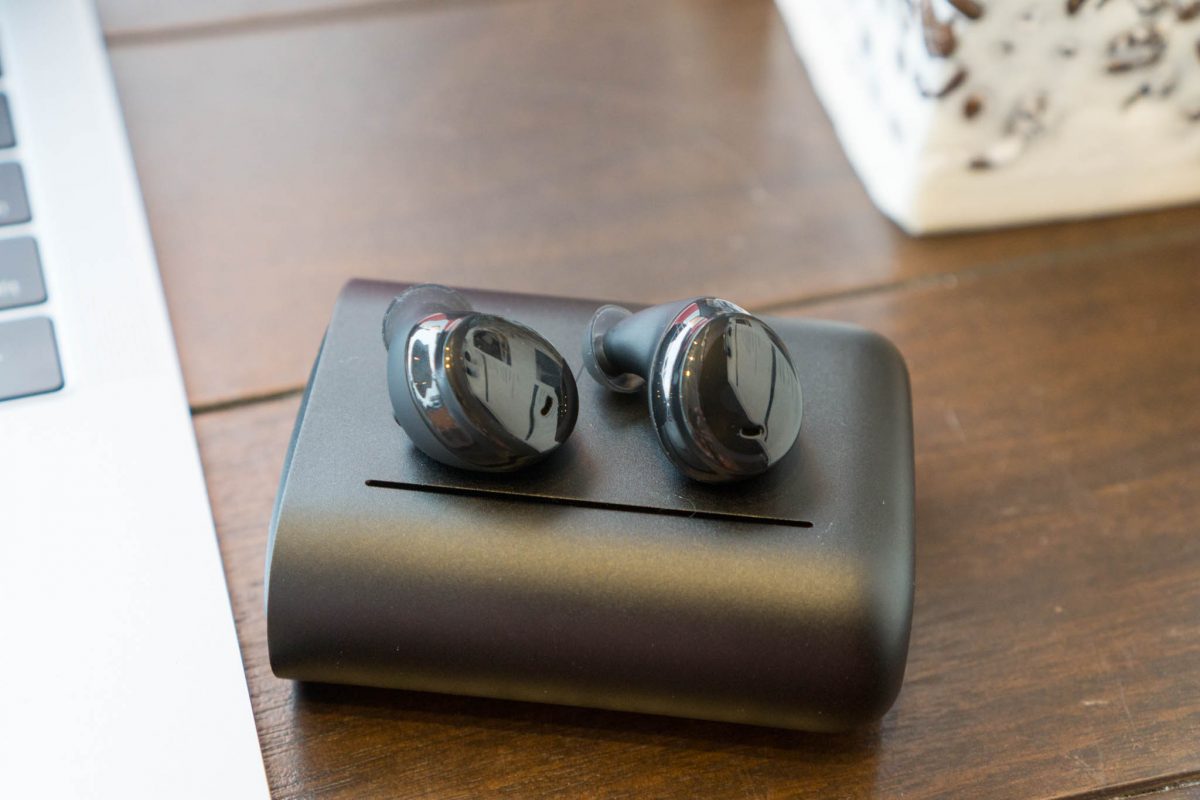
Even before listening to the Dash, I’m admittedly already impressed with the unboxing and initial handling experience. But some hiccups started to show when I begun to use the Dash.
Pairing with my Google Pixel XL was a little finicky. Aside from that, the lack of voice prompts meant that I had to refer to the box for instructions to get me started. Unfortunately, those instructions aren’t quite completely enough, and I was still left somewhat confused about the pairing and setup process, something I thought should have been designed to be idiot-proof.
For example, I’m led to understand that I should first install the Bragi smartphone app, which is available for both Android and iOS. The app sets up the Bluetooth Low Energy (LE) pairing, which on the Dash is activated only from the left earpiece. Bluetooth LE is used only for configuration and activity data. To listen to music and make voice calls, one still has to setup the regular Bluetooth connection via the smartphone’s Bluetooth menu. However, if the app already has Bluetooth LE setup, the phone won’t be able to separately pair via regular Bluetooth. I struggled for a while.
However, once everything has been setup nicely, the amazing experience returns. There is so much magic in this device. I did have to refer to instructions to figure out all the presses, taps, double-taps, swiping, head nodding and shaking, and other gestures to use and control the Dash. Admittedly, these are complicated enough that I couldn’t memorise them all right-away, but a good thing is that all these information is available in the app. There would be a bit of learning curve, but I expect I could remember them all eventually.
If you want to do one of those secret agent moves, you can double tap your cheek bone, and have the Dash activate Google’s Assistant or Apple’s Siri, and then you can just speak into thin air as the Dash picks up your voice via its bone conduction microphone. To be clear, you don’t actually have to touch the Dash itself. It works, and it’s really cool!
Bragi says the Dash has some 23 sensors. They include high-resolution optical touch sensors, 3-axis accelerometer, 3-axis gyroscope, 3-axis magnetometer, and dual pulse oximeter. It tracks head movement, so you can nod to answer a call or shake your head to reject a call. Nodding and shaking works with navigating through some menus too.
I took the Dash out for a run. I’m pleased that the Dash actually stayed secure in my ear. Activity tracking was accurate, at least in terms of step count, where it approximated closely to my Fitbit Charge 2. Heart rate data was slightly off, about 10% more than my Fitbit, but I think still reasonably close enough for most people.
If you don’t like to take your smartphone along with you on a run, or perhaps you can’t if you’re swimming, you can store music on the Dash itself. The 4 GB of storage isn’t much, but it should suffice for your workout. You would run out of battery anyway before you run out of music. Speaking of swimming, you can officially take the Dash with you on a swim. Swimming is, in fact, one of the supported workout activities.
Sadly, workout activity is synced to the smartphone app only when the smartphone is with you during the workout. If you go on a run without your smartphone, the Dash will read out your workout statistics when you’re done, but the data won’t be available in the smartphone app. Considering there is internal storage, perhaps a future software update might enable syncing of previous workout activities when the Dash re-connects with the smartphone.
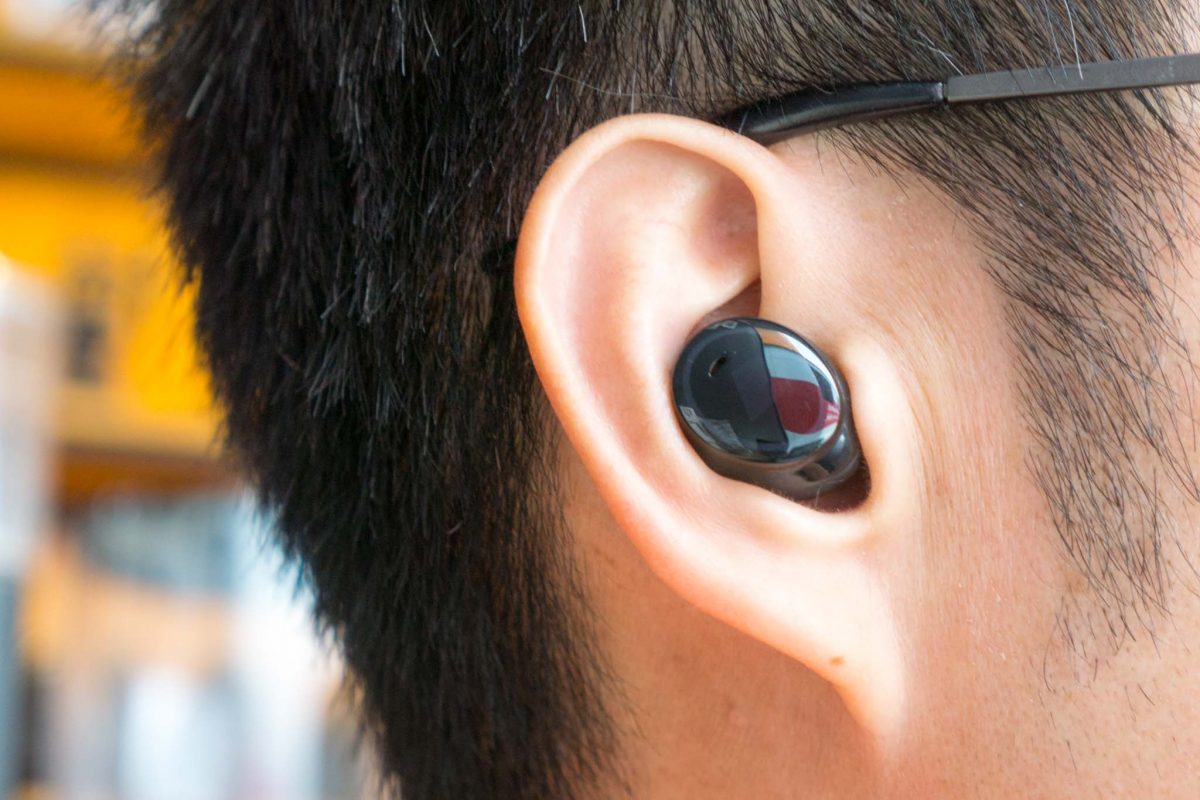
The audio transparency mode is really cool. When turned on, the Dash will pick up ambient sounds and play them back so you can hear them, even though the noise-isolating nature of the in-ear monitors do their job pretty well. In fact, it almost feels like a hearing aid. On a run, you can easily hear traffic noises and be aware of your surroundings.
Sound quality on the Dash is really good, or at least above average, depending on how critical you are of your listening gear. This is the sound quality I would expect on a regular pair of headphones if I had to pay as much as what the Dash costs, but remember of course that the Dash is a whole lot more than just a pair of regular headphones. Overall music comes across with lots of energy. There’s decent amount of bass, and a really expansive soundstage. If I had to be critical, I think it’s a tad muddy.
As with all in-ear monitors, a good fit between the earpiece and your ears is absolutely critical. If you get that right, the Dash delivers all-around good balanced music. The bass is warm and full bodied. The mids clear, but the highs are perhaps a little subdued. The Dash may not be good enough for audiophiles, but I think for most people, the music is entirely satisfying and enjoyable.
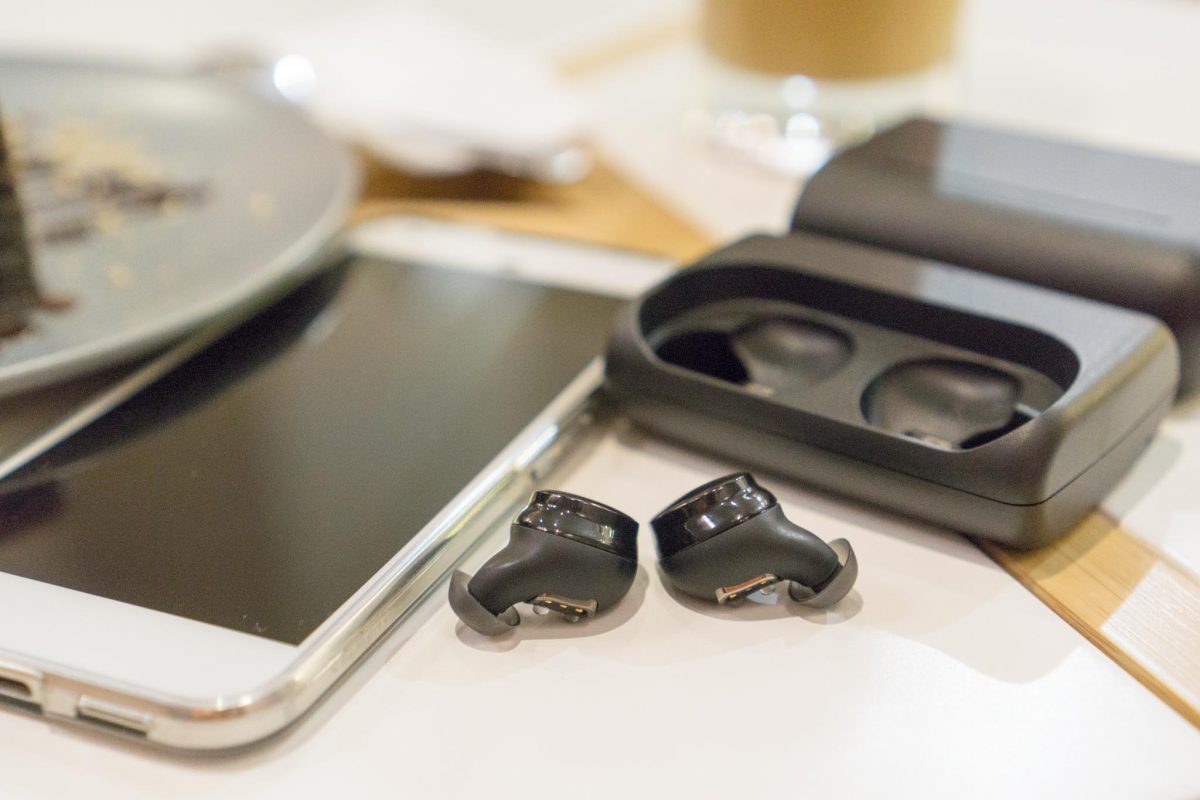
While audio quality itself is not an issue, I did experience some Bluetooth connection dropouts. It’s not a serious or frequent problem, but certainly something that could be improved. Call quality is good, and it’s nice to see that the bone conduction microphone picks up my voice pretty well.
Battery life on the Dash is rated up to 4 hours, so it should be long enough for most people. In-between uses, the charging base can fully recharge the Dash 5 times.
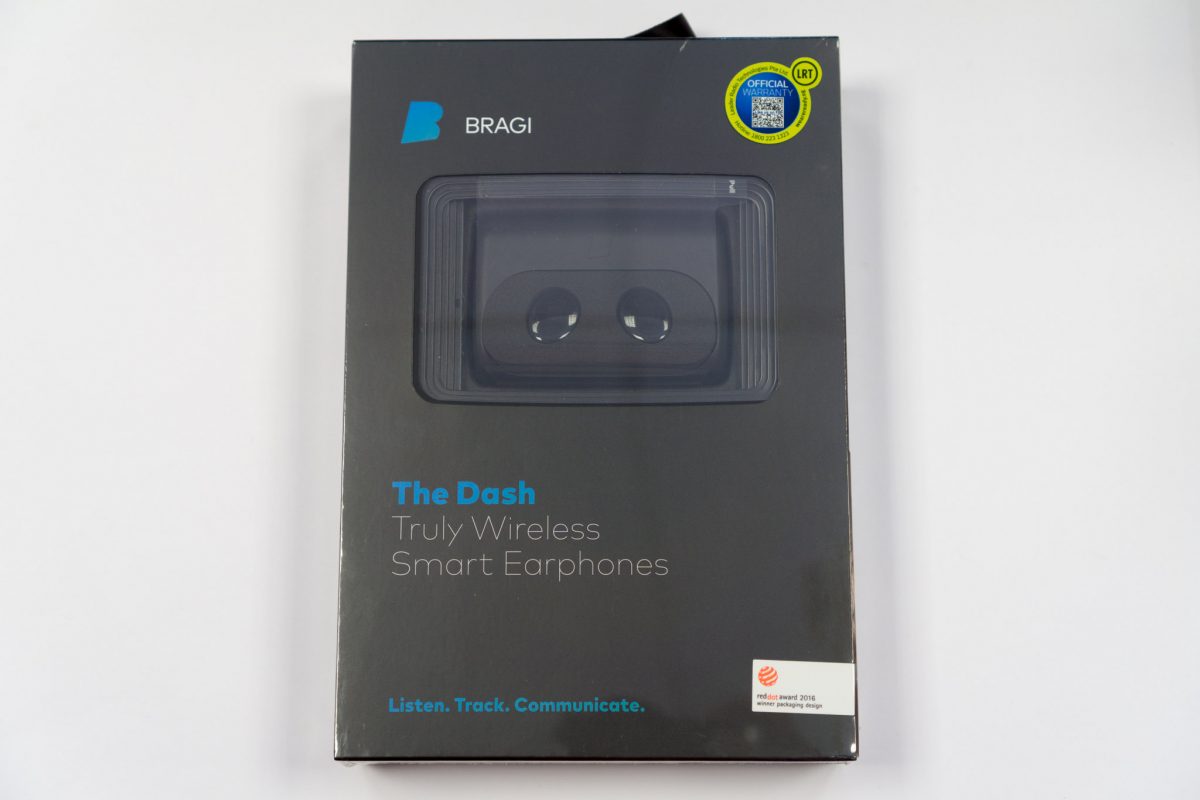
Bragi The Dash retails for S$428, and is available from truewireless.sg as well as most leading audio and consumer electronics retail stores in Singapore.
Conclusion
Bragi The Dash is the truly wireless earphones that will do just about everything you could want it to do.
Pros:
- Very well-built and great design
- Heart rate monitoring and activity tracking
- Waterproof, can swim with it
- Built-in music player
- Audio transparency mode
Cons:
- Setup and pairing is complex and finicky
- Bluetooth connection not completely stable
View Comment Policy